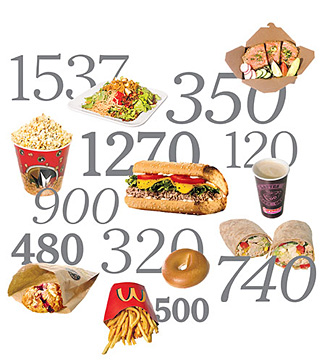

The company does have more than 300 international locations. system sales, which had reached nearly $1.9 billion in 2007, were down to $171 million in 2017, according to Technomic. Here’s the percentage of unit count closures the past five years, according to Technomic: 25.6%, 30.5%, 33.3%, 26.4% and 23.8%. The funding from the sales of that food was too important. Quiznos could have helped those operators out, but it had that debt it needed to pay off. Quiznos equipment could be had on Craigslist for pennies on the dollar. Quiznos was filled with small franchisees who made little in the way of profit. In 2009, there was an absolute decline in restaurant sales according to federal data-a remarkably rare event.

The recession was bad on the restaurant industry, as consumers cut back on dining out.
Quiznos calories counter free#
The free sub promo and Subway’s $5 footlong offer came just as the recession hit. Customers got angry, and Quiznos' problems got worse. Maybe the most famous came in 2009, when the company sent out a coupon for a free sandwich, and franchisees, angry at the discounts and low profits, revolted and refused to accept the coupons. Quiznos made the mistake of trying to compete by discounting. The smaller chain failed to properly react to the move.Īnd then, Subway began selling footlong subs for $5. The company did two things that would hammer Quiznos.įirst, it added small toasters in all of its locations in 2005, eroding what Quiznos felt was a competitive advantage. The Milford, Conn.-based sandwich giant might be struggling, but it has long been a dominant force in the sandwich business, perhaps never more so than in 2006. And Quiznos would prove to be the worst-case scenario. Leveraged buyouts assume that a company can continue to grow, because money from the company is used to pay the previous owners, in this case Consumer Capital Partners. When Quiznos filed for bankruptcy in 2014, the company had $875 million in loan obligations. The leveraged buyout left the company with hundreds of millions in debt. In 2006, a private-equity firm, CCMP Capital Advisors, bought a minority stake in Quiznos from Consumer Capital Partners, an investment firm led by Rick Schaden. In 2007, operators were suing the chain and forming rogue franchisee associations. The high food costs made it tough for them to make a profit. Those 4,700 locations averaged just $400,000 in revenue a year. That subsidiary took in $500 million in revenue in 2006. The company owned a subsidiary called American Food Distributors that bought food from vendors and distributed the food to operators.

Quiznos at the time relied on food and paper sold to its franchisees to make much of its profits. Why were they mad? Because they weren’t making money. “Boy were those franchisees mad,” one said. The tour was designed to tout the chain’s improvement.ĭuring that tour, we were in an elevator in which two employees were talking about a meeting the night before. In 2007, I toured Quiznos headquarters with Greg Brenneman, the CEO at the time, while I was working with another publication, Franchise Times. (Which just goes to show you that unit count doesn’t matter when it comes to chain size.)īut those 4,700 locations were built on a weak foundation of low unit volumes and low profits. To put the chain’s 4,700-unit size in 2007 into perspective, Arby’s and Firehouse Subs today operate a combined 4,300 locations. Its toasted subs were a contrast to the cold sandwiches that its larger rival served. The chain was a rapidly growing threat to Subway in the early 2000s, with innovative national ads and an early focus on internet-focused marketing ( anyone remember Spongemonkeys?). It’s easy to forget just how successful Quiznos was back in its heyday.


 0 kommentar(er)
0 kommentar(er)
